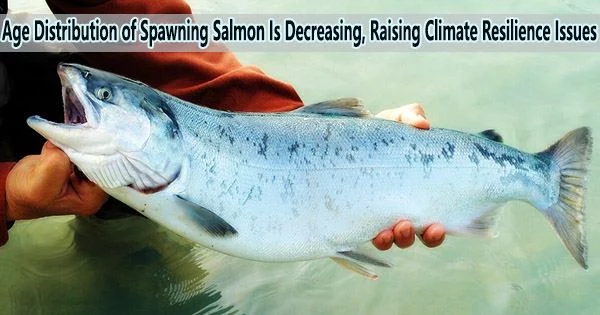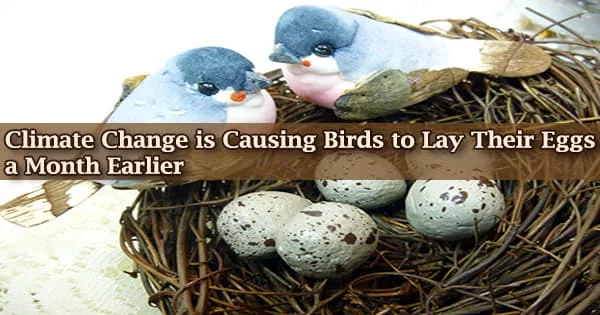According to a recent study by researchers at UC Santa Cruz and NOAA Fisheries, Chinook salmon reduce the potential impact of a bad year and boost the stability of their population in the face of climate unpredictability by returning to spawn in the Sacramento River at various ages.
Sadly, Chinook salmon that are spawning are becoming younger and more concentrated in fewer age groups, with the oldest age classes of spawners becoming less common in recent years.
The new study, published February 27in the Canadian Journal of Fisheries and Aquatic Sciences, suggests changes in hatchery practices and fishery management could help restore the age structure of the salmon population and make it more resilient to climate change.
The salmon fisheries of southern Oregon and California rely mainly on the fall-run Chinook salmon of the Sacramento River. This group is particularly vulnerable to the effects of climate change-driven, increasingly severe drought conditions.
“As we get more variable climate conditions, with greater extremes of rainfall and drought, we are going to see more ‘boom-and-bust’ population dynamics unless we start to restore the age structure of the population, which can spread out the effects of good and bad years across time,” said senior author Eric Palkovacs, professor of ecology and evolutionary biology and director of the Fisheries Collaborative Program at UC Santa Cruz.
If the majority of salmon return to spawn at the same age, a single bad year could have a catastrophic effect on the population as a whole. What ecologists refer to as the “portfolio effect” is an example of spreading the risk over a number of years, similar to how a financial portfolio spreads risk across a number of investments.
It’s pretty clear that current hatchery practices are resulting in very homogeneous populations returning at age three. Rather than producing a uniform product, it would be better to increase the diversity of the age structure by selecting older, larger fish and making sure you get as many of them into the spawning population as possible.
Professor Eric Palkovacs
Paul Carvalho, the first author and a postdoctoral scholar with the Fisheries Collaboration Program, noted that because they are migrating from freshwater rivers and streams to the ocean, young salmon are particularly susceptible to the effects of drought.
“We focused on the impacts of drought on the survival of juvenile salmon, but drought conditions can also increase mortality of returning adult salmon as they migrate upstream to spawn,” he said.
To simulate the effects of various drought conditions and other variables on the population, Carvalho created a life cycle model of the Sacramento River fall-run Chinook salmon population. The model was based on data from field investigations, including analysis by NOAA Fisheries scientists of the correlation between river flows and juvenile salmon survival rates.
The model allowed the researchers to evaluate the consequences of several causes that could change the population’s age distribution. The majority of the spawning salmon returning to the Sacramento River basin a century ago were between four and six years old. However, six-year-old fish are no longer commonly seen, and the majority of spawners are now three years old.
“Historically, you would have seen huge salmon coming back at older ages, but over the past century they’ve gotten smaller and younger,” Palkovacs said. “The dominant age class is now 3 years, and there are very few even at age 5, so there’s been a big shift in the age structure.”
Decreased size and age at maturity is a classic pattern of fisheries-induced evolution. A fish that dies before it can reproduce does not pass on its genes, hence a high death rate for older fish favors species that mature at younger ages.
The age structure of the salmon population is changing, but it’s not just because of fishing pressure. Moreover, hatchery procedures may unintentionally favor earlier maturation.
“It’s pretty clear that current hatchery practices are resulting in very homogeneous populations returning at age three,” Palkovacs said. “Rather than producing a uniform product, it would be better to increase the diversity of the age structure by selecting older, larger fish and making sure you get as many of them into the spawning population as possible.”
According to Carvalho, it would be most beneficial to combine lower harvest rates with selection for fish that spend more years at sea (delayed maturation) in order to improve the age structure of the population.
“Because the fish remain in the ocean longer, they are exposed to the fishery and other causes of mortality for a longer period, so that reduces the number returning to spawn if you don’t reduce fishing pressure on those older age classes,” he said.
Overall, the findings demonstrate that preserving or extending the age structure through lower mortality and postponed maturation enhances salmon population stability by protecting it from the negative impacts of drought and strengthening its resistance to a more changeable climate.
“Regardless of the mechanism, whether it’s reduced mortality or delayed maturation that’s driving it, increasing the diversity of the age structure will increase the stability of the population,” Carvalho said.
In addition to Carvalho and Palkovacs, the coauthors of the paper include William Satterthwaite, Michael O’Farrell, and Cameron Speir at the NOAA Southwest Fisheries Science Center. This work was supported by the Cooperative Institute for Marine, Earth, and Atmospheric Systems (CIMEAS) and the NOAA Quantitative Ecology and Socioeconomics Training (QUEST) Program.
















